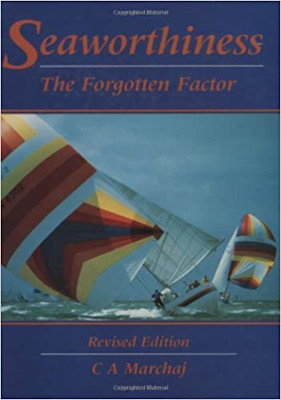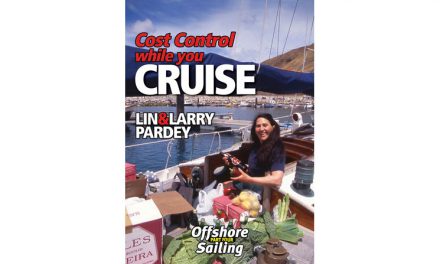
What have boat designs lost in the quest for windward performance? Has a century of yacht racing corrupted our ability to design safe, all-around cruisers? How do you quantify a yacht’s comfort and safety characteristics? Do boat owners even understand why their boats have certain features?
While addressing these questions in Seaworthiness: The Forgotten Factor, C. A. Marchaj attacks modern yachts and promotes the benefits of full-keel, heavy-displacement designs. He relentlessly criticizes the fin keel and skeg rudder and identifies well-known boat designers as charlatans. Marchaj casts doubt upon the entire enterprise of organized keelboat racing, noting the craziness of human ballast hanging on the rail and the inefficiency of extremely heeled light displacement-boats. More troubling, according to the author, are racing design features which make their way into general-purpose boats, where the quest for windward speed at all costs is not a legitimate requirement. Nonetheless the casual boater does not have the option of, nor understand, alternatives that would improve comfort, safety, and cost., Marchaj supports his points with detailed math formulas, which may be incomprehensible to some skippers, but the accompanying graphs and pictures are telling and much more accessible. Be prepared for incredible detail, such as individual chapters on pitch, roll, and yaw. But with repetition and visualization, you may begin to literally feel as you read the complex motions of a boat underway. In particular, the drawings of a heavy displacement yacht leaning into waves, maintaining equilibrium, make imminent sense. The action pictures of modern designs will make racing seem needlessly dangerous, not exciting. Though most of the book analyzes hull design, Marchaj also has counterintuitive views above the waterline, such as his support of heavy masts and rigs to dampen roll.
Sailors typically think about wind, and it is easier to study rigs, deck hardware, and other visible features. The primary value of Seaworthiness is the intense focus on hull designs. Even weekend sailors will benefit from ideas from this book; they will understand characteristics that make their boats more comfortable in a storm and may start thinking much more about the hull under the waterline when they evaluate their next boat. Whether you agree with Marchaj or not, he offers a perspective on design that is not typically reflected at today’s boat shows.
Seaworthiness: The Forgotten Factor By C.A. Marchaj, (International Marone Publishing Company, 1988; 371 pages)




